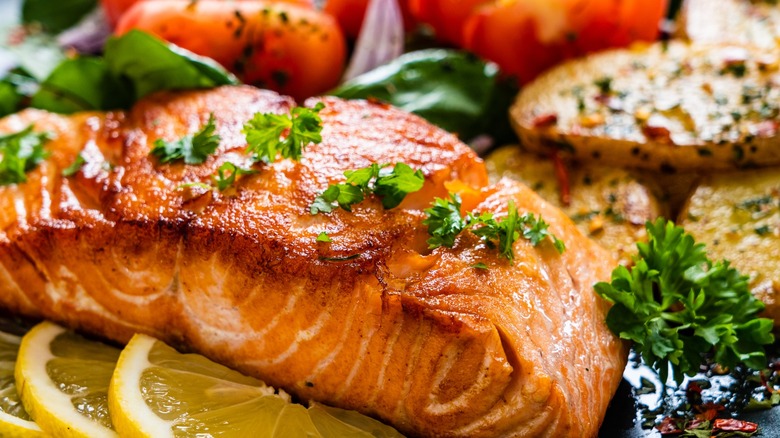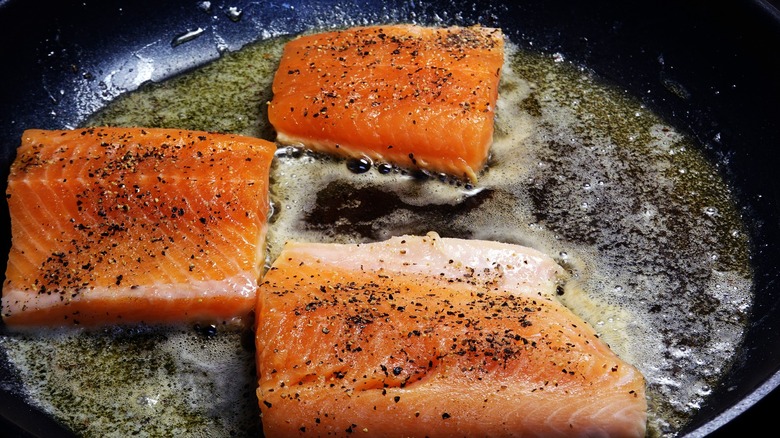The Ideal Amount Of Time To Fry Fish
Deliciously crispy, melt-in-the-mouth fried fish is easily the star of a meal, whether served with veggies, potatoes, or fluffy hush puppies. But be warned, when it comes to preparing a delicious fish dish, there's an art to achieving that perfect balance of crispy exterior and tender, flaky interior. You can either deep fry or shallow fry in a pan, and if you ask us, pan-frying takes the lead for the simpler, less messy technique, which also uses up less cooking oil. However, for the perfect pan-fried fish, you must exercise precision to avoid undercooking or overcooking your seafood.
And if you've ever wondered about the ideal amount of time to fry fish, the sweet spot is three to five minutes per side for the average-sized fillets, with larger pieces calling for a bit more patience. A thicker fillet or a whole fish will naturally require additional time to ensure the inner layers are cooked through. The larger the piece, the more gradual the cooking process should be, so an extra minute or two per side may be necessary to strike the right balance between the crust and the interior's doneness.
How to avoid overcooking or undercooking fish
Pan-frying fish involves careful orchestration of heat, oil, and time intending to achieve that coveted golden-brown crust while ensuring the fish remains moist and fully cooked. During the first few minutes of cooking, as the fish makes contact with the hot pan, the outer layers react to the high heat, forming a delicate crust. This initial sear locks in the juices, preventing the fish from drying out and avoiding too much oil absorption. The three to five-minute range per side ensures that the exterior cooks to a perfect crispness without risking overcooking the delicate flesh.
While timing is essential, it's equally important to trust your senses and observe for visual cues. As you pan-fry your fish, keep a close watch on its transformation. The crust should turn a beautiful golden brown, indicating caramelization and flavor development. The flesh becomes opaque, hinting at the fish's progress toward doneness. Additionally, the fish's texture plays a crucial role. Gently insert a fork into the thickest part of the fish and twist — if it flakes easily, it's a sign that it's ready to be enjoyed. With practice, you'll confidently bring forth perfectly pan-fried fish every time, leaving your tastebuds craving more.

